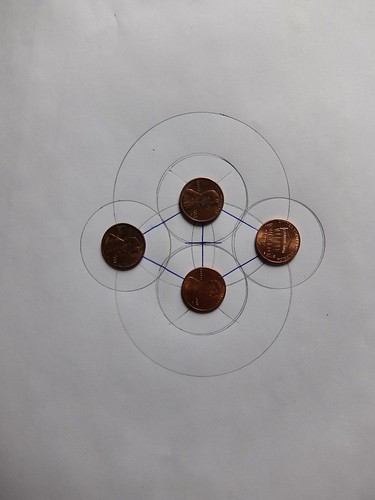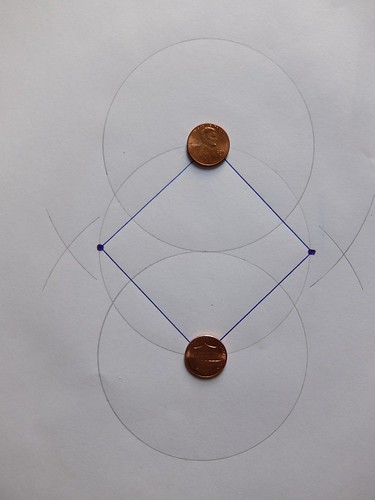Figure 1: central diamond (not square):
short diagonal (vertical) = 2; long diagonal = 2√3
short diagonal (vertical) = 2; long diagonal = 2√3
Figure 2: central diamond (a square):
both diagonals 2; edges √2
both diagonals 2; edges √2
A cube built from six of the squares in Figure 2 would conventionally have a volume of √2 to the third power, as 3rd powering means "cubing" in "Earthling Math".
The inscribed tetrahedron made from six of the cube's face diagonals has an Earthling volume of (√2√2√2)/3, as tetrahedrons in general have 1/3rd the volume of the parallelepiped in which they inscribe, as true for the golden cuboid as the cube.
We've forked our depiction of 3rd powering and developed the "Martian Math" apparatus, a tetrahedron, for this same purpose, setting our canonical cube of face diagonals 2R (R = unit sphere radius) or 1D at volume 3, not at √2√2√2, leading to a conversion constant known as S3 or √(9/8).
XYZ.volume * S3 = IVM.volume
"Martian Math" is a rebranding of certain aspects of "4D" geometry published as Synergetics in the 1970s (Macmillan) by RBF (R. Buckminster Fuller) and EJA (Ed Applewhite). The same core concentric hierarchy obtains, with a new rhombic triacontahedron added of 7.5 tetravolumes. This RT shares some of its vertexes with the rhombic dodecahedron of 6 tetravolumes.
The "4D" doesn't refer either to a "tesseract" (i.e. hypercube) nor to "3D + Time" but was rather a commercial logo used by Buckminster Fuller, along with "Dymaxion". The "4" in "4D" drew attention to the tetrahedron's starring role.



